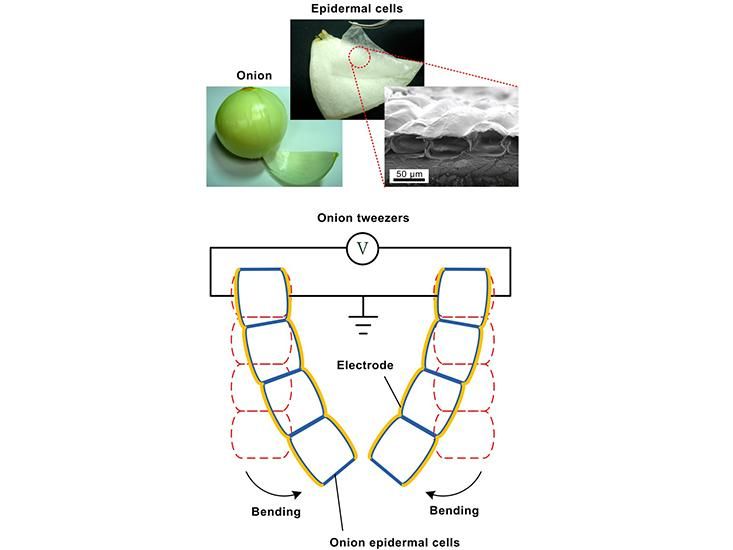Veggie Power? Artificial Muscles Made From Blinged-Out Onions
Turning root vegetables into working muscles requires gold, electricity and imagination
/https://tf-cmsv2-smithsonianmag-media.s3.amazonaws.com/filer/e9/dc/e9dc3e1d-edff-472d-8070-9bb5cfe81a05/42-53879156.jpg)
Popeye made spinach famous as a muscle-building vegetable. But veggies might someday make you stronger without being eaten—when scientists use them to build a new class of artificial muscles. This week a team in Taiwan unveiled gold-plated onion cells that show promise at expanding, contracting and flexing in different directions just like real muscle tissue.
Artificial muscles have a wide range of possible applications, from helping injured humans to powering robots, and there are lots of ways to try to build them. Last year, for instance, scientists developed a set of artificial muscles from simple fishing line that could lift 100 times more than human muscles of the same size and weight. But no clearly superior way to make a fake muscle has yet emerged.
“There are artificial muscles developed using elastomers, shape memory alloys, piezoelectric composites, ion-conductive polymers and carbon nanotubes,” says Wen-Pin Shih of National Taiwan University in Taipei. “The driving mechanisms and functions are very diverse.” Some artificial muscle types are driven by pressure, such as in pneumatic systems, while others create motion through temperature changes or electrical current.
A major challenge for artificial muscle makers has been engineering their materials to bend and contract at the same time, the way real muscles do. When someone flexes the classic “make a muscle” pose, for example, their biceps contract but also bend upwards to lift the forearm. Shih and colleagues were attempting to engineer an artificial muscle that could simultaneously bend and contract in this way, and they found that the structure and dimensions of onion skin were very similar to the microstructure they had in mind.
To put the pungent vegetable to the test, Shih's group first took a single layer of epidermal cells from a fresh, peeled onion and washed it clean with water. Then the team freeze-dried the onion to remove the water while leaving its cell walls intact. That process turned the microstructure rigid and brittle, so they treated the onion with acid to remove a cell-stiffening protein called hemicellulose and restore elasticity.
The onion layers were made to move like muscles by turning them into an electrostatic actuator. This meant coating them with gold electrodes, which conduct current. The gold was applied in two thicknesses—24 nanometers on top and 50 nanometers on bottom—to create different bending stiffnesses and make the cells flex and stretch in lifelike ways. This paired nicely with the natural tendency of onion skin to bend in different directions when subjected to different voltages due to electrostatic attraction.

Lower voltages of 0 to 50 volts caused the cells to elongate and flatten out from their original curved structure, while higher voltages of 50 to 1000 volts caused the veggie muscle to contract and bend upwards. By controlling these voltages to vary muscle movements, two of the onion arrangements were used as tweezers to grip a small cotton ball, Shih and colleagues report this week in Applied Physics Letters.
But that success required relatively high voltage, which Shih calls the concept's main drawback to date. Lower voltages are needed to control the muscle with tiny batteries or microprocessor components, which would be better suited to power implants or robot parts. “We will have to understand the configuration and mechanical properties of the cell walls better to overcome this challenge,” he notes.
The onion cells provide some advantages over previous attempts to use living muscle cells to create artificial tissue, Shih says. “Culturing cells to form a piece of muscle tissue for generating pulling strength is still very challenging,” Shih says. “People have tried to use live muscle before. But then how to keep the muscle cells alive becomes a problem. We use vegetable cells because the cell walls provide muscle strength whether the cells are alive or not.”
Durability is an issue, though: The gold plating helped shield the onion muscles, but moisture can still penetrate their cell walls and change the material properties. Shih has an idea to tackle this problem, which could soon be put to the test. “We might coat the onion artificial muscle with a very thin fluoride layer,” he says. “That will make the artificial muscle impermeable to moisture but won’t change the device softness.”